Photographs: Reuters.
At first glance, the last samvat – the year as reckoned by the lunar calendar, from one Diwali to the next – has seen decent gains for equity investors.
The Nifty and the Sensex are up about 10 per cent year-on-year and, of course, some individual stocks and specific sectors have done better.
For example, 44 highly traded stocks have registered capital gains in excess of 100 per cent, and sectors such as fast-moving consumer goods (38 per cent), banking (25 per cent), finance (25 per cent) and pharma (23 per cent) have comfortably outperformed the broad indices.
...
What does the new Samvat hold in store for markets?
Photographs: Reuters.
While index capital gains haven't quite beaten inflation, which ran close to double digits for the past 12 months, they have more or less kept pace.
Assuming that a long-term investor received the benefit of tax-free dividends, at a yield of about 1.6 per cent for the Nifty/Sensex, she would apparently have little reason to complain.
This performance is completely at odds both with the macroeconomic situation and with corporate performance, which have deteriorated through most of this period. And were it accurate, why is the prevailing atmosphere one of gloom?
A second look suggests the overall impression of broad capital gains could be somewhat deceptive.
...
What does the new Samvat hold in store for markets?
Photographs: Reuters.
In fact, few Indian investors received the full benefit of capital gains - and many of them probably lost money.
The stock market rally was entirely driven by optimism on the part of foreign institutional investors.
Overseas portfolio investors pushed over Rs 85,000 crore (rs 850 billion) into the Indian market while Indian investors, including both domestic institutions and retail players, were net sellers through the entire samvat. It wasn't a great period for stock pickers either.
...
What does the new Samvat hold in store for markets?
Photographs: Reuters.
Comparing the prices of 1,290 stocks that were traded regularly on the National Stock Exchange in the past year, it's apparent that the rally was very thin.
Just 586 of those stocks gave positive returns, and only 452 registered capital gains of over 10 per cent, beating the indices.
Roughly two out of three shares lost money through this period; 77 stocks lost over 50 per cent.
Several key heavyweight sectors such as metals, infrastructure, capital goods and real estate gave negative returns. Also, among asset classes other than equity, debt was a consistent loser, as always when inflation is high.
...
What does the new Samvat hold in store for markets?
Photographs: Reuters.
Real estate was depressed. Baskets of non-food commodities gave negative returns. Hence, faced with a difficult situation, most Indian investors ended up doing what their ancestors have always do#8800 they bought gold.
Precious metals offer some protection against inflation but they are zero-yield, and capital gains from the prevailing record levels are moot.
So what does the new samvat hold in store?
...
What does the new Samvat hold in store for markets?
Photographs: Reuters.
Immediate capital gains look unlikely. The festive season generally sees muted stock market activity anyhow. But it does seem that the market is bottoming out.
Also, given weak growth trends, the interest rate cycle may also have peaked. Those are positives. But there is also a guarantee of domestic political instability, and the global economic scenario is scarcely encouraging either.
True, these "known unknowns" may already be discounted by current prices.
Barring major wars or acts of god, the market shouldn't fall further - and, frankly, there is no other asset class that is likely to outperform equity.
Systematic equity investment remains a valid strategy. And if there is a growth rebound, the gains could be higher than anticipated.


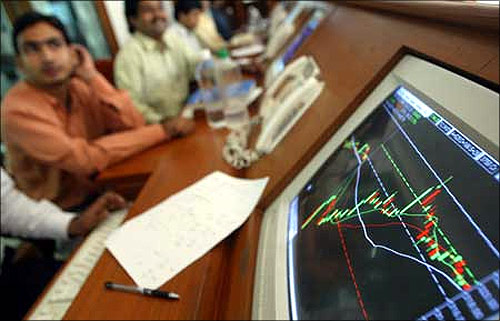
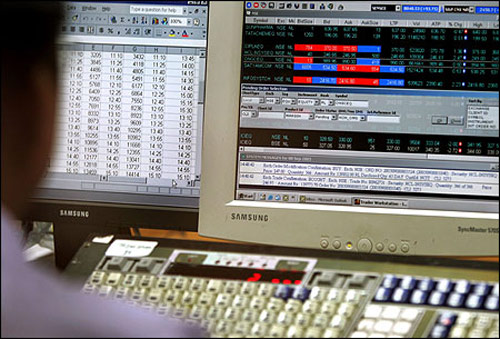
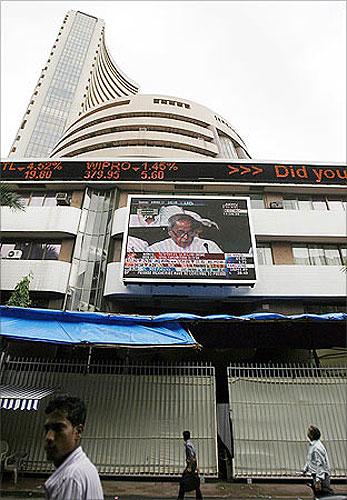
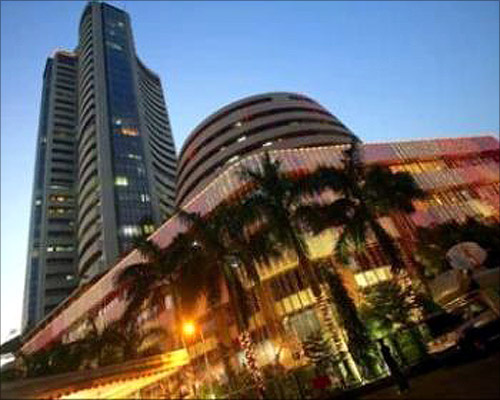
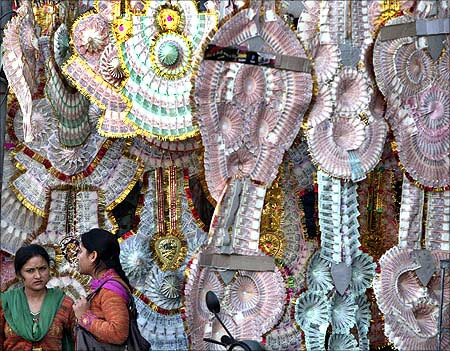
article